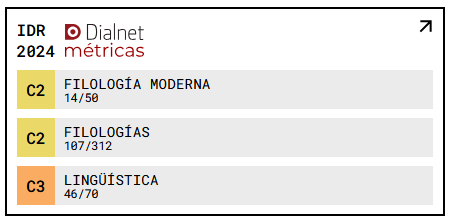An analysis of the textbooks for teaching English for medical purposes in the former Degree in Medicine at the University of Las Palmas de Gran Canaria
DOI:
https://doi.org/10.18172/jes.2818Keywords:
English for Medical Purposes, Textbook evaluation, EHEA, Materials evaluation, ESP.Abstract
The process of building the European Higher Education Area has fostered the internationalization of higher education and placed special emphasis on the prominent role of learning foreign languages. The implementation of the new degrees has included the so-called language requirement that must be taken into account when developing new teaching materials for the grades. In this paper we analyse various methodological and educational aspects in the six textbooks that were used to teach English for Health Sciences, ten optional subjects of the former Degree in Medicine. The ultimate goal of the analysis of the aforementioned books is to develop a taxonomic model that serves for the creation of supporting materials to be used in the optional subject of the new Degree in Medicine at the University of Las Palmas de Gran Canaria.
Downloads
References
Alemán Torres, F. y S. Marrero Morales. 1994. Technical English for Medicine Studies. Las Palmas de Gran Canaria: ULPGC Publishing Services.
Arnó-Macià, E. 2014. Information Technology and Languages for Specific Purposes in the EHEA: Options and Challenges. Languages for Specific Purposes in the Digital Era. Eds. E. Bárcena, T. Read, and J. Arús. New York-Dordrecht-London: Springer. 3-25.
Coleman, J. A. 2006. “English-medium teaching in European Higher Education”. Language Teaching, 39 (1): 1-14.
Cunningsworth, A. 1995. Choosing your course book. Oxford: Heinemann.
Danaye Tous, M. and S. Haghighi. 2014. “Evaluation of ESP textbooks: Evidence from ESP textbook of computer engineering major”. International Journal of Research Studies in Language Learning 3 (2): 55-68.
Glendinning, E. H. y B. A. S. Holmström. 1998 (1987). English in Medicine. Cambridge: Cambridge University Press.
Harmer, J. 1983. The Practice of English Language Teaching. London & New York: Longman.
Hismanoğlu, M. 2011. “The integration of information and communication technology into current ELT coursebooks: a critical analysis”. Procedia Social and Behavioral Sciences 15: 37-45.
Kantonidou, M. 2008. “English for Specific Purposes in the Context of Electrical Engineering Curricula: A Case Study”. EAEEIE Annual Conference: 48-53.
McCarter, S. 2009. Medicine 1. Oxford: Oxford University Press.
McCarter, S. 2009. Medicine 2. Oxford: Oxford University Press.
McDonough, J. and C. Shaw 2003. (2nd edition) Materials and Methods in ELT. A Teacher’s Guide. Malden: Blackwell.
Methold, K. y C. Methold. 1975. Practice in Medical English. London: Longman.
Modh Sidek, H. 2012. “EFL Textbook Analysis”. Language and Literacy 14 (3): 27-45.
Pérez Cañado, M. L. 2009. “Reengineering English Language Teaching: Making the Shift towards ‘Real’ English”. English Language Teaching 2: 3-10.
Scrivener, J. 2004. Learning Teaching. Oxford: McMillan-Heinemann.
Stoller, F. L. et al. 2006. “Evaluative review in materials development”. Journal of English for Academic Purposes 5: 174-192.
Tiersky, E. y M. Tiersky. 1992. The Language of Medicine in English. Englewood Cliffs: Prentice Hall Regents.
Vičič, P. 2011. “Preparing materials for ESP Learning”. Interalia 2: 107-120.
Downloads
Published
How to Cite
Issue
Section
License
The authors retain copyright of articles and authorize Journal of English Studies the first publication. They are free to share, redistribute, and/or reprint the article without obtaining permission from the publisher as long as they give appropriate credit to the editor and the journal.
Self-archiving is allowed too. In fact, it is recommendable to deposit a PDF version of the paper in academic and/or institutional repositories.
It is recommended to include the DOI number.
This journal is licensed under a Creative Commons Attribution 4.0 International License













